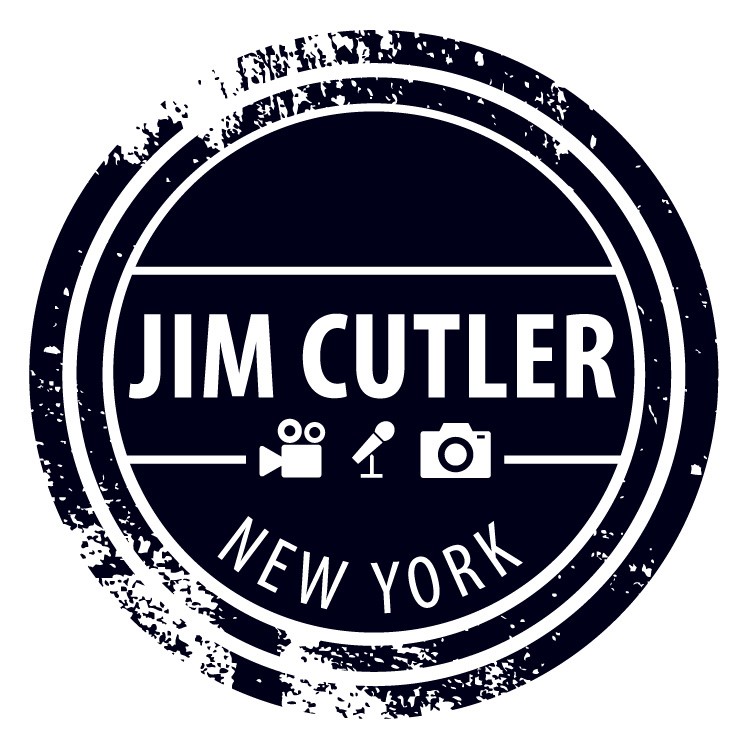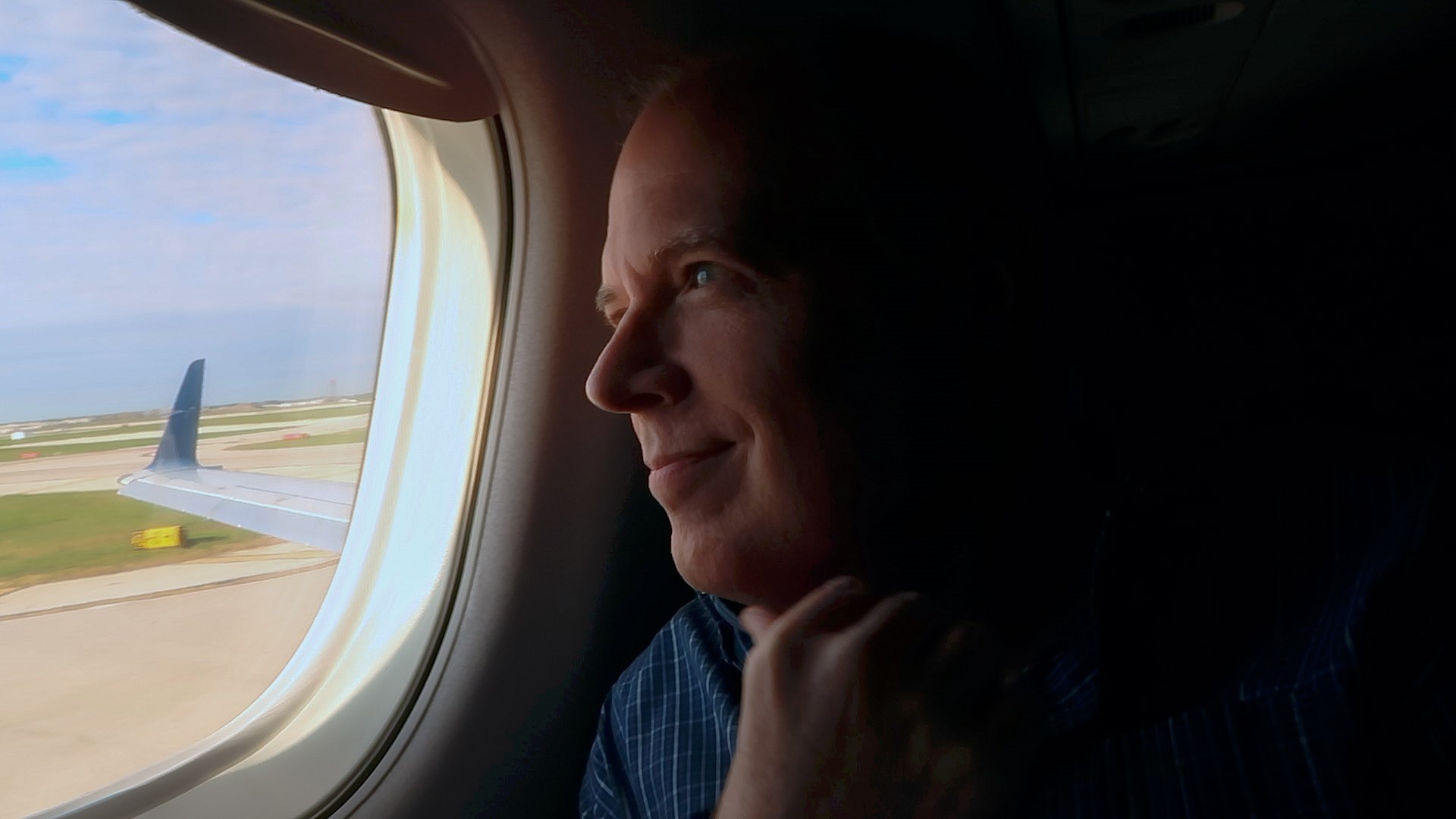Jim Cutler is an icon in the radio (and TV) business. Chances are your station or company has hired Jim to design and produce imaging that cuts through. You certainly know “that voice.” Jim’s been at it 35 years, and these days, you can hear him regularly on MSNBC, ESPN, Nickelodeon, and two series on Discovery.
Jim is all over News/Talk and Sports radio stations, as well as local TV affiliates just about every market. He’s the unique voice of Emmy-award winning  “E:60” on ESPN, and shows up regularly on Jimmy Kimmel’s show.
“E:60” on ESPN, and shows up regularly on Jimmy Kimmel’s show.
Back at my very first Classic Rock stations, Jim created iconic “Time Capsules,” first for WKLH/Milwaukee, and then for scores of stations in that up-and-coming format in the ’80s. I can tell you those produced nuggets helped the music come alive, while lending credibility to a format that was still trying to find its way.
A visit to Jim’s website reveals his artisanship. His repertoire goes well beyond well beyond cutting liners and drops, and runs deep into the visual arts, including photography and video production. Jim and his wife, Dawn, live in both New York and Santa Monica. At the end of this post, I’ll give you a link to a short film they’ve put together that simply rocks.
Jim Cutler wrote today’s “Guest List” – great advice for radio professionals tasked with writing and producing imaging. Take good notes. – FJ
I ask my audiences how many of them are signed up for breaking news alerts on their phones. Almost everyone raises a hand. When a phone buzzes with a news alert, you get a small shot of adrenaline. I then ask, how would you react if the ALERTS started to be a waste of time? Instead of an alert about a war or a bomb or the Dow hitting 20,000, what if it read, “News happens every day. Things in the world are . . . happening out there. And, when they do . . . we’ll cover them.” Nothing new was learned. There is no red meat in the alert.
Your phone buzzes again, and now the ALERT reads: “Sometimes you need an umbrella because it rains, and sometimes it’s sunny. We cover the weather because weather is important. We’re your weather leader.” Fluffy image promos like this (radio stations still do exactly this in 2017) don’t have the same value they once had. You need to give an actual forecast or a real breaking news event in exchange for the listener engaging.
So, what’s better? I PREACH putting solid content into imaging. In five years of speaking to station groups, my biggest challenge is getting people to even realize that this stuff is important. Most of us do radio by what FEELS right, based on what we learned coming up in the biz. And that way may no longer be right.
I’m in an unusual position to make suggestions because each week we talk to the entire country of News/Talk and Sports. We see the copy from everywhere, the trends and the struggles.
Here are some thoughts to share about promos for this age of ridiculously small attention spans, and endless other choices people have to be entertained. It is just opinion, I’m not handing anything down to you from Mount Olympus. I’m not that kind of guy.
1. Weed out all the GENERIC.
Replace it with real CONTENT promos. Generic promos are filler that sound like a good idea but gain you nothing. An example is, “With The Big Bob Show on News Talk 1000, you just NEVER know what you’re going to hear.” Or its brother, “You NEVER know what’s gonna happen next on The Big Bob Show, Sports Radio 945!” There’s a better way.
Instead, write a short topical promo with a REASON to listen, such as: “Is Facebook selling your posts about guns to the NRA and other groups? At 11, I’ll tell you WHO may be buying YOUR address, just because of your gun rant on Facebook. I’m Bob Brown and I’ll see you at 11 on KXXX.” It’s easy to quickly get good at these. It’s a headline that isn’t a so-what, followed by what it means to the listener, followed by the call to listen to hear what it means. This is simple red meat. It’s a reason to listen instead of “You just never know what to expect with Big Bob!”

2. Don’t make a “laundry list” promo about your ENTIRE talent lineup.
For example, is there any emotional connection for you here with any of these names? “Wake up mornings to Gary and the Gator Show, 5am to 9. Followed by Julie Fish till 1. Then it’s Jack Michaels. And at 3, Bill Caslteoff and the Whammer drive you home.”
Did any of that do anything for you? You may know the nuances and strengths of each of those hosts because you work with them. But most listeners may only recognize one or two. And just saying a list of the host names does not create a reason to listen to the others. It’s the same as saying “blah blah blah.”
Instead, use that promo avail to promote: 1) The NEXT show. 2) USING a specific topical REASON to listen. For example: “Has Obamacare been a giant lie? They told you if you didn’t like the program you could keep your current one. How’s that working out for you? This is Julie Fish. In 30 minutes, I will tell you why your rates might even double . . . again. I’ll see you at 1:00 PM on KXXX.” Make promos that are content.
I think it was Scripps-Howard TV that studied the effectiveness of promoting shows far in advance. They learned that the only thing you can effectively get people to watch is what is coming up next. Promoting to the show after what’s next becomes much less effective. So promote the heck out of what is next and actually tease the topic and what it means to the listener.
Are you short on staff and can’t write promos? The host can write it every day. Although it is an extreme example, I have some hosts that record their promo into their iPhones at home and email it to the station on the way in. Not ideal, but with a little processing it doesn’t sound out of bounds. Getting the content on the air is what matters, even if the sound is 15% less than it could be in a studio. If your host is there an hour or so before the show, there’s no reason not to record a “what’s coming up” promo as soon as they get in. Specific. Headline. Good. Instead of a laundry list of when hosts are on.
3. Don’t waste time out of breaks.
It is in your interest to be back to programming and back to the red meat as fast as possible. But, how much time-wasting fluff comes out of commercial breaks before you are back into interesting programming again?
How many hosts come out of commercials with some hot music track that plays for 10 or 15 seconds or longer! You’re not back to the meat yet at this point. The host then says, “342-765-5200 is the number. Oh, I love this music. Lots of your calls coming up. . . .” You’re still not back into content after all those commercials. It’s fluff and a bad habit and jamming to a song snippet that the host cares much too much about.
Instead do this: The second the spots are over, the host should allow one or two beats of music and then say something that GRABS and MATTERS. This is never the phone number or how good the music is or “your calls are coming up.” Instead, come right out of spots with one or two beats of music and a headline that GRABS and resets: “How can we possibly pay for a wall when we need that money to fix our crumbling roads and bridges! 342-765-5200. . . .” Boom! Spots over, right into a solid headline immediately.
Or come directly out of some spot breaks with a recorded listener to set up the host: Spot break ends. One or two beats of music and then you’re immediately back into solid red meat with a recorded caller: “Build the wall? Now Mexico isn’t paying for it? My roads to work are a disaster. We gotta front the money to build the wall and there goes our money to fix the roads?” The host IMMEDIATELY answers and you’re transitioned back in to programming really fast. Wasted time gone.
Many stations mistakenly worry about the genre of music coming out of breaks more than the content coming out of breaks. Tight. Back to basics. Good content. Exciting radio. A reason to listen. Tight imaging.

4. If you run “outsourced promos” made by promo farms, only run the ones that aren’t fluff.
Some production services crank out a lot of fluff disguised as something important. A promo farm producer wades through Sean Hannity airchecks looking for a clip they can build a promo around. He comes across Sean using the phrase, “Pass it to the Right.” Using that clip out of context, this is what they send you: “At the Thanksgiving dinner table, Sean Hannity NEVER passes the potatoes to the LEFT. (clip of Sean from aircheck where he says ‘Pass it to the Right’) “Sean Hannity, always to the right, never left. Every day at 1 on KXXX.” OK. He never passes it to the LEFT? You see what they did there?
Instead, find the show’s daily advisory email that most syndicated programs send and see what he is planning for today’s show. Write (or have the board op or producer write) a short promo that specifically gives a reason to listen. For example, you see that Sean’s guest is former CIA official Michael Hayden. Google that name and write: “Michael Hayden used to head the CIA and the NSA and he says that the intelligence report about Russia hacking the election is a ‘Brick Short of a Load.’ So, which of the president’s enemies cooked up the report? Sean Hannity in 30 minutes on News Talk 95-7.” Specific. Red meat. Perfect for Hannity’s audience. A reason to listen.
5. Don’t expend your precious energy and resources working hard on things that don’t matter.
My sports analogy: You are a hockey team playing your heart out for the three full periods. You worked hard. You had great fights. You skated hard and left all your energy out there all game. You go home satisfied because you worked so hard. But, you lost. Even though you worked so hard no one told you the ONLY thing that mattered was to get the puck in the net. You didn’t do that.
Working hard on the wrong thing is a trap because you feel satisfied solely because you worked hard. Putting hard work into making your imaging that turns out to be empty to the listener is the same thing. You could have shot for the goal, by promoting to a listening occasion to get higher ratings. Instead, you just “ran” some promos and checked the box that you did that.
Another case of working hard on the wrong thing is to make great promos but have no way to SCHEDULE them effectively. I know many stations that just have three or four promos ROTATING all day. This means promos air for shows that just finished because it’s just a rotation. Instead, hand schedule your promos to promote what’s next. Make them topical and interesting.
In radio, I’ve seen more time wasted on what bed to put under the promo than in what the promo is going to say. Saying topical relevant things today is simple to do well. You just look at what is happening in news and sports, and find the drama in it and ask what it means. There’s the place to spend your overworked precious little time that’s left. Let’s do one last example:
BAD actual script from a NewsTalk station (and a REAL example of bad): “Listening to other stations is like wearing skinny jeans, not cool. Leave it here, NewsTalk 800.”
INSTEAD, you could be promoting to a listening occasion: “How much more tax will you be paying to front the bill to build the wall? Because to build it, your taxes are going up. Sam Thomas will tell you in 30 minutes on NewsTalk 800.”
 Recap:
Recap:
Real content over fluff. It wasn’t that way in the ‘90s when we were the only game in town. Generic imaging can be so easily upgraded to modern topical imaging with content.
Hire board ops and producers who write because you are already overtaxed.
In NewsTalk and Sports, the sole purpose of a promo is to drive listeners to something that gets you more ratings. Period.
Attention spans are shorter than ever so get right to the meat faster in your imaging. Get back into programming faster. Listen to your station impatiently and the fluff moments become very evident. These days with so many other ways the listener can spend time, generic and time-wasting equals death. Slash away fluff from everywhere and replace it with imaging that says something interesting.
This doesn’t mean you can’t have fun! Do what you do creatively that makes you who you uniquely are. But all the while keep reminding yourself that it isn’t 1995. Today, TV shows begin with no intro because people leave during an intro. People won’t sit through a lot of those long generic gems anymore. Fortunately, it’s so easy to be topical.
Thanks to Mike Stern for putting this post together.
And to watch an amazing piece of video production that will give you a sense of what drives him and Dawn, check out Jim’s work here. It’s a truly nifty piece of production.
More Guest Lists
- Jim McGuinn: 5 Things The Current Knew It Had To Do When Prince Died
- Gene & Julie: 5 Morning Radio Bits That Always Work
- Rich Homberg: The 5 Things Today’s Radio Personalities Can Learn from J.P. McCarthy
- Luke Bouma: 6 Things Every Radio Broadcaster Should Know About Cord Cutting
- Alan Cross: 5 Music Facts That Will Stun You
- Like A Pair Of Old Jeans - April 2, 2025
- What’s Fair Is Fair - April 1, 2025
- What’s On Your Bucket List? - March 31, 2025





Thank you. Insightful, helpful! a great reminder me how much fun and rewarding imaging can be…..
Max, I’m sure Jim would appreciate that comment. Thanks for chiming in.
Great insights by one of the great VO artists out there. It’s no wonder he’s the premiere voice for sports & N/T. Thanks for sharing and thanks to Fred & Company for hosting!
Our pleasure. It’s days like this when I feel like the blog is doing its job. Thanks for the comment, Chris.
I had to stop and cry three times as our station promo content was outed here.
I was afraid that might happen, Greg. Jim’s comments describe the state of imaging at lots of stations, so you’re not alone. Thanks for reading our blog.
While most of this is for news/talk stations, the exact tactic can work for music stations as well! You could say “KXXX wants your family to enjoy (theme park) with a 4 pack of tickets….win next at (time).” While the talent could deliver this, a well produced sweeper with audio can do it so much better. “5 songs that define Monday are posted at KXXX-dot-com now!.” “Sally felt bad because she had to work today. Then, she heard THIS on KXXXX-Sally’s workday fixer”. There’s a lot of imaging out there that does nothing to “advance the plot”. This is an awesome post, Jim. TV has been using this tactic for decades – and you CAN drive people back to radio at given times with a compelling reason!
I’m sure Jim appreciates your comment, Dave, as do I. Thanks for engaging with us.
Jim started out great and continues to get better. Many lessons here and much appreciated.
Jim’s passion for his craft jumps right off the laptop, tablet, or mobile phone. We were honored to have him write it.
Putting a team together to audibly innovate.
Thanks for the push Jim and Fred.
Glad it was helpful, Chuck. Jim is the best.